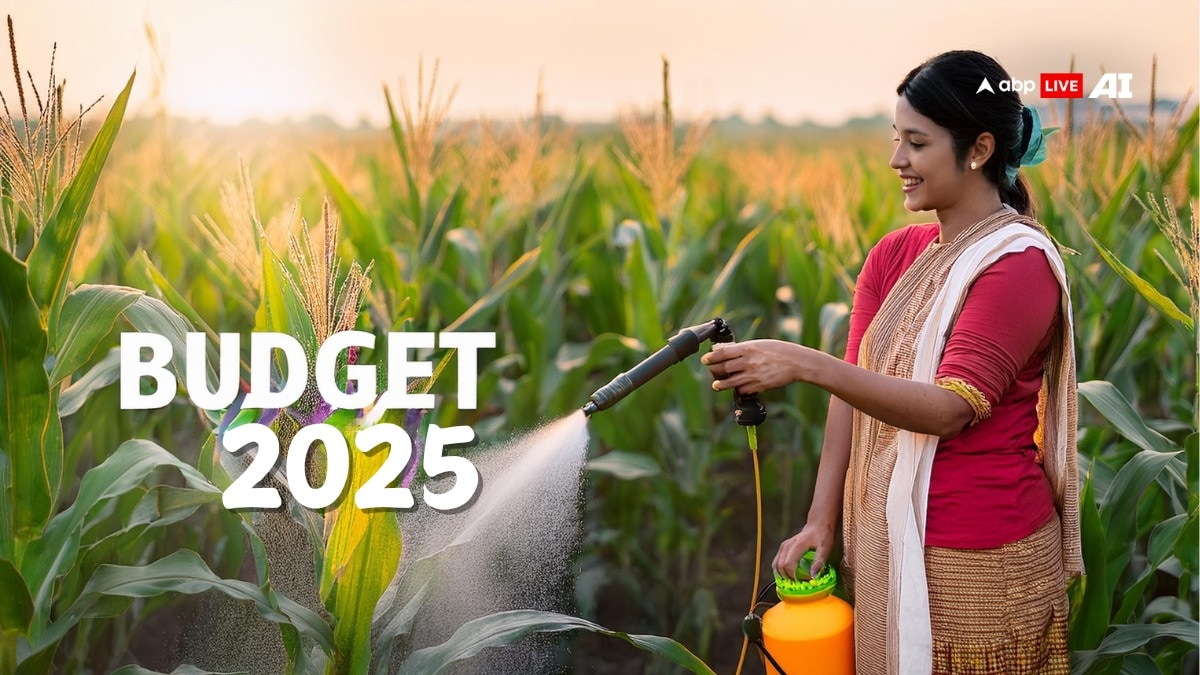Budget 2025: As India gears up for the 2025 Union Budget, the agriculture sector remains a critical area of focus. Contributing 18 per cent to the country’s Gross Value Added (GVA) and employing nearly 46 per cent of the population, agriculture continues to underpin the Indian economy. Despite its importance, challenges like low productivity, fragmented landholdings, and limited mechanisation hinder the sector's growth.
Current Scenario
As per Anand Ramanathan, Partner and Consumer, Products and Retail sector Leader, Deloitte, India’s agriculture sector generated a GVA of Rs 23 lakh crore, with the country accounting for 11 per cent of global agricultural output. However, the share of India’s agricultural exports remains modest — at 2–3 per cent overall and 1–2 per cent for processed food products. The financial year 2024 saw a 5 per cent dip in agriculture exports, attributed to restrictions on non-basmati rice and stricter export norms.
While Government schemes like Rashtriya Krishi Vikas Yojana and the Digital Agriculture Mission have been instrumental in improving irrigation, mechanisation, and tech adoption, additional efforts are necessary. With shifting consumption patterns toward nutrition-rich foods like dairy, horticulture, and fisheries, the sector must address underlying issues and leverage Farmer Producer Organisations (FPOs) to empower farmers.
ALSO READ: Budget 2025: Reimagining The New Income Tax Regime
Expectations From Budget 2025
Ramanathan has outlined detailed expectations and policy recommendations for the agriculture sector. Take a look:
Comprehensive Programmes to Boost Yield
- Proposal: Launch crop-specific Programmes focused on advanced machinery, efficient farming practices, and affordable inputs. Engage model farmers to promote knowledge-sharing.
- Objective: Enhance yields across staple and alternative crops, enabling crop diversification into pulses, oilseeds, maize, and millet.
- Rationale: As India’s population approaches 160 crore, higher productivity is vital to ensure food and nutritional security.
Strengthening the Seed Ecosystem
- Proposal: Streamline the development, multiplication, and distribution of high-quality seeds through public-private collaborations and infrastructure investment.
- Objective: Improve the Seed Replacement Rate (SRR) and ensure widespread adoption of high-yield varieties.
- Rationale: Despite research advancements, India lags in productivity. Promoting new stress-resistant seed varieties can boost production across agro-climatic zones.
Accelerating Digital Agriculture
- Proposal: Develop robust agricultural databases, agri-exchanges for data sharing, and comprehensive digital training for stakeholders.
- Objective: Drive tech adoption among farmers, enhancing productivity, quality, and decision-making.
- Rationale: While digital solutions exist, their adoption remains slow. Integrating these tools into existing extension frameworks can build trust and improve outcomes.
Enhancing Farmer Producer Organisations (FPOs)
- Proposal: Provide capacity-building initiatives and financial support to FPOs for produce aggregation, storage, value addition, and market linkages.
- Objective: Enable FPOs to improve profitability for small and marginal farmers.
- Rationale: Stronger FPOs can facilitate resource pooling and better market access, addressing structural issues in the sector.
Policy Recommendations For the Agriculture Sector
Cluster-Based Approach
Focusing on crop-specific clusters can streamline diagnostics, enhance productivity, and create demand-driven market linkages. This localised approach ensures region-specific solutions and targeted investments.
Revamping Post-Harvest Infrastructure
Investments in storage, grading, and cooling units—especially at key locations like mandis, ports, and villages—can reduce losses and prevent distress sales. Schemes like the Agriculture Infrastructure Fund (AIF) should be revisited to encourage private participation and improve financial viability.
The agriculture sector holds immense potential for growth, but addressing foundational challenges is key. Budget 2025 presents an opportunity to introduce transformative measures that ensure sustainability, self-sufficiency, and prosperity for India’s farmers.


